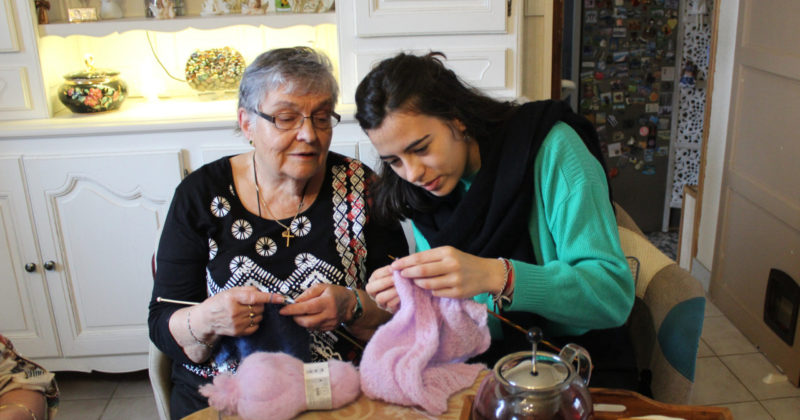How to reduce the dangerous effects of loneliness and social isolation
According to the ‘Campaign to End Loneliness’, loneliness can be as damaging as smoking 15 cigarettes a day (Holt-Lunstad, 2010).
Loneliness is also associated with an increased risk of heart disease, stroke and high blood pressure, as well as dementia. In fact, a Dutch study cited by the campaign found that lonely people ‘have a 64% greater risk of developing clinical dementia’.
 Having healthy social networks, on the other hand, can decrease the risk of developing diseases and premature death, as well as helping people recover faster when they are ill. Loneliness is more common in the elderly but it can affect people of any age. It can be commonly experienced by mothers, those with physical and mental disabilities, teenagers and children.
Having healthy social networks, on the other hand, can decrease the risk of developing diseases and premature death, as well as helping people recover faster when they are ill. Loneliness is more common in the elderly but it can affect people of any age. It can be commonly experienced by mothers, those with physical and mental disabilities, teenagers and children.
Loneliness does not discriminate – all ages and backgrounds can find themselves struggling with loneliness in the right circumstances and it touches the lives of millions. In fact, a staggering nine million adults describe themselves as ‘often or always lonely’ so it is clear that loneliness has become a pressing public health concern.
The COVID-19 pandemic and the associated implementation of unprecedented social distancing strategies that were crucial to limiting the spread of the virus have also undoubtedly pushed these figures higher. Other measures such as working from home, shopping online and even conducting GP appointments via telephone have only exacerbated the problem further.
Professor Francis Mcglone is a leading researcher on the primal importance of physical touch. He has found that affectionate touch reduces feelings of social exclusion, which is one of the most painful experiences any human can have. Touch can also slow down our heart rate, lower blood pressure, strengthen our immune response and reduce our cortisol levels (cortisol is often labelled as ‘the stress hormone’ because it’s secreted in higher levels during the body’s stress response and is responsible for several stress-related changes in the body).
Tips to prevent the detrimental effects of social isolation and loneliness
1. Keep connections with family and friends
Spend more time with your family and friends. Along with the telephone, technology has changed the way people interact with each other and it’s now easier than ever to stay connected. Use the opportunities offered by the pandemic. Social media platforms such as Facebook, Skype, Twitter, Zoom, and Instagram enable people to stay connected in a variety of ways. Some older adults, however, may not be as familiar with these new technologies, and this style of interaction may not effectively serve their emotional needs. We can help older family members and friends to overcome technology barriers such as using online video chat (which is often easier to use and conveys nonverbal cues) so that people can feel more engaged.
Maintaining a regular schedule through online or phone services with family members and loved ones can be helpful for older adults.
2. Maintain physical and mental activities
 To stay confined at home for much of every day is a psychological challenge for many people. Encouraging and supporting engagement with activities that feel pleasurable to an older person (or anyone who is at risk of loneliness) has benefits for physical, mental, and spiritual well-being.
To stay confined at home for much of every day is a psychological challenge for many people. Encouraging and supporting engagement with activities that feel pleasurable to an older person (or anyone who is at risk of loneliness) has benefits for physical, mental, and spiritual well-being.
Regular scheduling is especially supportive for older people at risk of delirium, which is characterized by an imbalance in circadian rhythm. Television and YouTube channels adapted for older adults and effective physical and mental programs, such as exercise programs, mindfulness practice, and music programs can also be very useful for helping to reset this imbalance.
Exercise has benefits for physical and psychological health (specifically for mood and cognition). There is evidence that regularly engaging in mentally challenging and new activities may reduce the risk of dementia. Why not try our chair yoga class? You can access the class here. This class could be performed in a group setting through a common goal, sharing progress, or creating a friendly competition via social media.
3. Manage emotions and seek help if feelings are overwhelming
Loneliness is often associated with negative thoughts. Anxiety and depression may cause social withdrawal, which will only serve to exacerbate feelings of loneliness. Conscious breathing, meditation, and other relaxation techniques are helpful for the mind and body and can decrease levels of anxiety and depression. However you should never hesitate to seek help if loneliness is having a significant impact on your life.
Here are some helpful resources to help combat loneliness:
Campaign to end loneliness: aimed at older individuals and has brilliant resources including a PDF on the psychology of loneliness and a loneliness tool kit.
Age UK: Although it’s mostly aimed at older people, it is relevant to anyone who may be experiencing loneliness.
Mind’s PDF on loneliness has good practical ideas and advice on combatting loneliness.
The British Red Cross – Although it’s aimed at younger people, there is a selection of resources for people of any age to understand and tackle loneliness in an easy and accessible way.
 This article has been written by Ify at The Modern Glow. Ify is a Registered Naturopathic Nutritional Therapist, Yoga Teacher and Licensed Brain Health Practitioner. You can book yoga or nutrition advice sessions with Ify though BelleVie. Learn more here.
This article has been written by Ify at The Modern Glow. Ify is a Registered Naturopathic Nutritional Therapist, Yoga Teacher and Licensed Brain Health Practitioner. You can book yoga or nutrition advice sessions with Ify though BelleVie. Learn more here.

